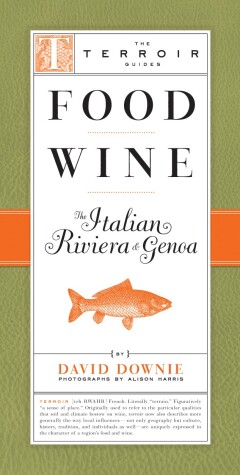The Terroir Guides
2 total works
Most food guides for Italy suffer from the “too-much, too-little” syndrome. The territory is vast, yet for each city and village they rarely provide enough information. This guide focuses on a manageable territory–Liguria–and covers it in depth with an emphasis on understanding the local culture through its food. This is not an encyclopedic volume but a renowned food writer’s highly selective guide to Liguria’s authentic small eateries, culinary traditions, wine, wineries, food artisans, and gourmet shops. (The “big” restaurants are covered in a short and amusing sidebar that lists the places that everyone knows and can read about in any guide or on the Internet: a tip of the hat to the great toques, but many other suggestions are given so the reader can dine elsewhere. In Italy, the restaurants Michelin rewards with multiple stars have little to do with regional or local food.) Recommendations center on “where the locals eat.” The book is also lavishly photographed, perfect for the armchair traveler. There is a glossary of food items and unusual specialties, as well as a typical Ligurian menu, detailed indexes, many sidebars, and a map.
Learn all about the savory Ligurian flatbread called farinata (and where to buy farinata baking pans), garlic (raw in local dishes, braids, the pink heirloom variety from the village of Vessalico, and the village’s annual garlic festival), pesto mania (and a profile of the hothouses of the western Genoese suburb of Prà that produce what most Italians and 99.9 percent of Ligurians claim to be the world’s best commercially grown basil) and which restaurants serve authentic mortar-and-pestle-made pesto, as well as dozens of other regional topics.
Learn all about the savory Ligurian flatbread called farinata (and where to buy farinata baking pans), garlic (raw in local dishes, braids, the pink heirloom variety from the village of Vessalico, and the village’s annual garlic festival), pesto mania (and a profile of the hothouses of the western Genoese suburb of Prà that produce what most Italians and 99.9 percent of Ligurians claim to be the world’s best commercially grown basil) and which restaurants serve authentic mortar-and-pestle-made pesto, as well as dozens of other regional topics.
For decades, David Downie and Alison Harris have been exploring Burgundy—they walked clear across it in 2006—reporting on their finds for top magazines and newspapers worldwide. This is the third Terroir Guide they have collaborated on and perhaps the most detailed and personal of any so far. Burgundy is one of France’s great food and wine regions. Many of the world’s most sought-after wines are produced there; so, too, are some of the most underrated, underpriced white wines in France. Each of Burgundy’s five wine districts is thoroughly explored in this guide, with recommendations on which wines to buy and which wineries to visit. Wine terminology is explained in a way that anyone can understand. On the food side, Burgundy still has a surprising number of luxurious restaurants, as well as dozens of country auberges visitors dream of discovering. Downie leads you to just such places, as well as to specialty food shops where you can taste the region’s terroir firsthand. Burgundy’s lush scenery distills the essence of French terroir, and each of its subregions has a distinctive character where the architecture and art reflect this storied diversity.

